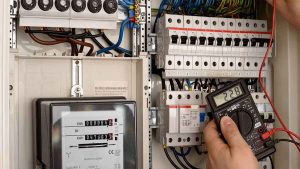Production plan of fittings from ABS
Production plan of fittings from ABS – Pipe fittings such as elbows and tees are part of the piping that help change the direction of flow. Pipe size changes such as reducers and three-way reducers. Couplings connect different components and various types of connections such as caps stop the flow.
There are several types of pipe fittings used in plumbing. Pipe fittings used in plumbing: elbow, tee,; reducer, tube nut, coupler, four-way, cap, plug, bush, expansion joint, adapters, first (Weldolet, Sockolet, Elbowlet, Thredolet, Nipolet, Letrolet, Swepolet) milk; Screw, steam valve.
Advantages of ABS fittings
– These connections show good resistance to high temperatures
– They can also withstand a lot of pressure
– ABS joints are very strong and inflexible.
– They have a very high resistance to chemical agents.
– These joints have good resistance to creep and stress failures.
– They are also very strong against blows
– ABS is resistant to abrasion and corrosion
– They can update these specifications up to minus 40 degrees Celsius.
– They are light weight and their installation and commissioning takes less time.
ISIC code related to the ABS fittings industry
ISIC stands for International Standard Industrial Classification. Coding, as a simple and accurate method for identifying goods, parts, documents and property, has been used for years at the company and supply chain levels.
ICS code of connections from (ABS): 2520412346
Customs tariff code related to the ABS fittings industry
Tariff or in other words (TARIFF) is a kind of numerical or numerical criterion for identifying and determining the position of goods in the clearance of goods.
Customs tariff is the amount of import duty payable for the import of goods. Customs tariff is designed and used in the context of history based on special systems and methods such as customs administration, statistics, transportation, insurance, etc.
Connections customs tariff code from (ABS): 39174000
Production plan of fittings from ABS by injection molding plan
Closing: Before injecting the material into the mold, the two halves of the mold must first be closed by the closing unit. Each half of the mold is connected to the injection molding machine and half of it is allowed to move. The hydraulic closing unit presses half of the mold together and applies sufficient force to prevent the mold from holding closed during injection. The time it takes to close the mold depends on the machine – larger machines need more time to do this. This time can be estimated from the dry cycle time of the device.
Injection: Raw plastic materials, usually in the form of pellets, are fed into the injection molding machine and moved to the mold by the injection unit. During this process, the material melts due to heat and pressure. The molten plastic then enters the mold very quickly, forming pressure packets and holding the material. The amount of substance that is injected is called the shot. Accurate calculation of injection time is difficult due to the complexity of the process and the change in flow of molten plastic into the mold. However, injection time can be estimated by impact rate, injection pressure and injection strength.
Cooling: The molten plastic inside the mold begins to cool as soon as it comes in contact with the inner mold surfaces. As the plastic cools, it forms according to the shape of the mold. But some parts may shrink during the cooling process. Packaging the material during the injection phase causes excess material to be poured into the mold and reduce the amount of visible shrinkage. The mold cannot be opened until it has cooled down. Cooling time can be estimated from several thermodynamic properties of plastic and its maximum wall thickness.
Drain: After sufficient time, the cooled part may be removed from the mold by the drain system connected to the rear half of the mold. When the mold is opened, a mechanism is used to pull out part of the mold. Force must be applied to pull out the part because as it cools, the part shrinks and sticks to the mold. To facilitate the evacuation of the part, the mold discharge material can be sprayed on the surfaces of the mold cavity before injecting the material. The time required to open the mold and pull out the part can be estimated from the dry cycle time of the machine and it must have time to first come out of the mold and after the part comes out, the mold can be closed to inject the next shot. .
After the injection molding cycle, some processing is usually required. During cooling, the materials in the mold channels are connected. This excess material, along with any flash that has occurred, should normally be removed using a cutter. For some types of material, such as thermoplastics, the extra material from this trim can be recycled by placing it in a plastic wheel called a regrind machine, or granulator, which converts the waste material back into pellets. Due to the degradation of some material properties, it must be mixed with the raw material in the appropriate ratio for readjustment to be reused in the injection molding process.
Status of active fittings production units from ABS
The following diagram shows the number and capacity of ABS connection production units in the country by province.
Import and export status of ABS fittings
The chart of import and export of ABS fittings in the country by year is shown in the figure below.
Steps of obtaining the establishment license and operation license of the joint production unit from ABS
Contact the Optimizer of Trade to see the steps of obtaining the establishment license and exploitation license
Technical, financial and market review of ABS fittings production plan
Annual production capacity: 400 tons
Dollar exchange rate: 25,000 Tomans
Required land area: 12,000 square meters
Total infrastructure: 3400 square meters
Number of manpower required: 68 people
Fixed investment amount: 31 billion Tomans
Value of machinery and equipment: 19 billion tomans
Internal rate of return: 38%








Leave A Comment